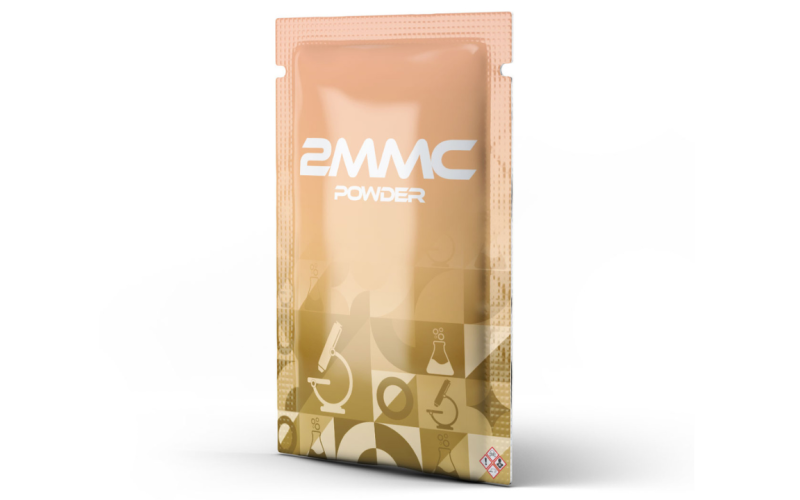Withdrawal Symptoms 2MMC
Aimimichem is your partner in scientific exploration. Our top-tier research chemicals are designed for breakthroughs. Shop with us for exceptional quality and service.
We only sell our products to customers aged 18 years or over, for purposes of research only.
Understanding the Aftermath: Withdrawal Symptoms of 2MMC and Insights for Researchers
In the realm of research chemicals, particularly those associated with the specialist supplier Aimimichem, 2MMC Powder emerges as a substance of significant intrigue. Aimimichem, a company renowned for its dedication to high-quality research chemicals, emphasizes the use of products like 2MMC for research purposes exclusively, underscoring a strict policy against human consumption. This article delves into the complexities surrounding 2MMC Powder, exploring its applications within scientific research and the associated risks, framed within the operational ethos of Aimimichem.
The Chemical Landscape of 2MMC
Before we explore the withdrawal symptoms, it’s essential to contextualize 2MMC within the broader chemical landscape. 2MMC falls within the cathinone class, substances originally derived from the khat plant, which have stimulant properties similar to amphetamines and MDMA. The compound has garnered attention in scientific circles for its potential to mimic the euphoric and stimulating effects of more commonly known substances, making it a point of interest for research into neurochemistry and the mechanisms of addiction and withdrawal.
Withdrawal Symptoms: A Research Overview
Withdrawal symptoms from psychoactive substances like 2MMC can vary widely among individuals, influenced by factors such as dosage, duration of use, and individual susceptibility. While comprehensive human studies on 2MMC are limited — given the compound’s designation for research purposes only — insights can be gleaned from analogous substances within the cathinone and broader stimulant categories. Common withdrawal symptoms observed in stimulant-like substances include fatigue, changes in appetite, mood swings, irritability, depression, and sleep disturbances. Researchers are particularly interested in the neurochemical changes that precipitate these symptoms, studying neurotransmitter systems like dopamine and serotonin for clues.
.

The Importance of Laboratory-Controlled Studies
Aimimichem, operating from the Netherlands and adhering to Dutch laws and REACH regulations, emphasizes the need for laboratory-controlled studies to gain accurate insights into 2MMC’s effects, including withdrawal phenomena. Such controlled environments allow for the isolation of variables and the detailed observation of changes, providing a clearer picture of how 2MMC interacts with biological systems. This rigorous approach not only contributes to the scientific understanding of cathinones but also informs potential therapeutic interventions for managing withdrawal symptoms in clinical settings.

Ethical Considerations and Research Compliance
Aimimichem’s commitment to reliability and lab-tested products underscores the ethical considerations inherent in research chemical studies. The emphasis on research purposes only, not for human consumption, aligns with a responsible approach to scientific inquiry. Additionally, the restriction of sales to customers aged 18 or over and the compliance with legal and regulatory frameworks ensure that research into substances like 2MMC is conducted with the highest standards of safety and ethics in mind.

Conclusion: Bridging Gaps in Knowledge
The study of withdrawal symptoms associated with 2MMC is not just about charting the adverse effects of a substance; it’s about deepening our understanding of human neurochemistry and the complex interplay between brain and behavior. As researchers and scientists delve into this territory, supported by companies like Aimimichem, the goal remains clear: to illuminate the paths of addiction and recovery, paving the way for innovations in treatment and intervention. With each study, the scientific community moves closer to demystifying the mechanisms underlying substance withdrawal, contributing to a foundation of knowledge that supports both individuals and society at large.
Have Any Questions
We've answers
Yes, Aimimichem provides research chemicals like 2MMC primarily for the purpose of scientific study, which includes investigating the neurochemical effects of these substances and their associated withdrawal symptoms. However, it’s important to note that these studies should be conducted under controlled laboratory settings by qualified researchers.
While comprehensive human studies on 2MMC are limited due to its status as a research-only substance, withdrawal symptoms are speculated to be similar to those of other stimulants, including fatigue, mood swings, irritability, depression, and sleep disturbances. These symptoms are of particular interest to researchers studying addiction and neurochemistry.
While Aimimichem primarily supplies research chemicals, the company is open to engaging with the scientific community and may support or participate in collaborative research efforts aimed at understanding 2MMC and its effects. Researchers interested in collaboration are encouraged to contact Aimimichem directly for more information.
We only sell our products to customers aged 18 years or over, for purposes of research only.


